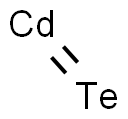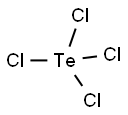Tellurium , 99.999%metalsbasis,1-10mm , 13494-80-9
Synonym(s):
Tellurium element
CAS NO.:13494-80-9
Empirical Formula: Te
Molecular Weight: 127.6
MDL number: MFCD00134062
EINECS: 236-813-4
| Pack Size | Price | Stock | Quantity |
| 10G | RMB115.20 | In Stock |
|
| 25g | RMB292.80 | In Stock |
|
| 50G | RMB326.40 | In Stock |
|
| 250G | RMB1272.00 | In Stock |
|
| others | Enquire |
PRODUCT Properties
| Melting point: | 450 °C (lit.) |
| Boiling point: | 990 °C (lit.) |
| Density | 6.24 g/mL at 25 °C (lit.) |
| vapor pressure | 0Pa at 25℃ |
| storage temp. | Sealed in dry,Room Temperature |
| solubility | insoluble in H2O, benzene, CS2 |
| form | shot |
| Specific Gravity | 6.24 |
| color | Silver-white |
| PH | 0.5 (20°C in H2O) |
| Flame Color | Pale green |
| Resistivity | 5.8-33 μΩ-cm, 20°C |
| Water Solubility | insoluble H2O, benzene, CS2 [MER06] |
| Merck | 13,9201 |
| Exposure limits | TLV-TWA 0.1 mg (Te)/m3 (ACGIH) PEL-TWA: 0.1 mg (Te)/m3 (OSHA) TWA 0.1 mg (Te)/m3 (NIOSH) . |
| InChIKey | VTLHPSMQDDEFRU-UHFFFAOYSA-N |
| CAS DataBase Reference | 13494-80-9(CAS DataBase Reference) |
| EPA Substance Registry System | Tellurium (13494-80-9) |
Description and Uses
Tellurium is one of the rarest elements on earth similar to selenium, and was discovered in Transylvania in 1782 by Franz-Joseph Muller von Reichenstein. The name derived from the Latin word for earth. Tellurium is occasionally found naturally, more often as telluride of gold, calaverite.
Tellurium’s major use is as an alloy with copper and stainless steel. It makes these metalseasier to machine and mill (cut on a lathe). It is also used as a vulcanizing agent in the productionof rubber, as a coloring agent for glass and ceramics, and for thermoelectrical devices.
Along with lithium, it is used to make special batteries for spacecraft and infrared lamps.Tellurium can be used as a p-type semiconductor, but more efficient elements can do a betterjob. It is also used as a depilatory, which removes hair from skin.
Although tellurium forms many compounds, most of them have little commercial value.
Safety
| Symbol(GHS) |   GHS07,GHS08 |
| Signal word | Danger |
| Hazard statements | H317-H332-H360D-H413 |
| Precautionary statements | P202-P273-P280-P302+P352-P304+P340+P312-P308+P313 |
| Hazard Codes | T |
| Risk Statements | 25 |
| Safety Statements | 45-28A |
| OEB | D |
| OEL | TWA: 0.1 mg/m3 [*Note: The REL also applies to other tellurium compounds (as Te) except Tellurium hexafluoride and Bismuth telluride.] |
| RIDADR | UN 3288 6.1/PG 3 |
| WGK Germany | 3 |
| RTECS | WY2625000 |
| TSCA | Yes |
| HazardClass | 8 |
| PackingGroup | III |
| HS Code | 28045000 |
| Hazardous Substances Data | 13494-80-9(Hazardous Substances Data) |
| Toxicity | A member element of group IVa in the Periodic Table with both metallic and non-metallic properties. Tellurium compounds of biological interest include the elemental form, as well as compounds with valences of 12 (telluride), 14 (tellurite), and 16 (tellurate). Commercial applications of tellurium include its use as a coloring agent and as an alloy with other metals. Industrial hazards generally involve the volatile forms including tellurium dioxide and hydrogen telluride rather than the less toxic elemental form. Exposure to potassium tellurite may also occur; this compound is known to cause hemolysis of erythrocytes, probably via its reduction product, telluride. Other non-nervous system effects of exposure to tellurium compounds include weight loss, blue/ black discoloration of skin, and a characteristic garlic breath odor. Animal models have clearly implicated tellurium in induction of specific neuropathological findings. These include its action as a teratogen in the induction of communicating hydrocephalus (treated rats give rise to affected offspring), lipofuscinosis, and peripheral neuropathy. |
| IDLA | 25 mg Te/m3 |




